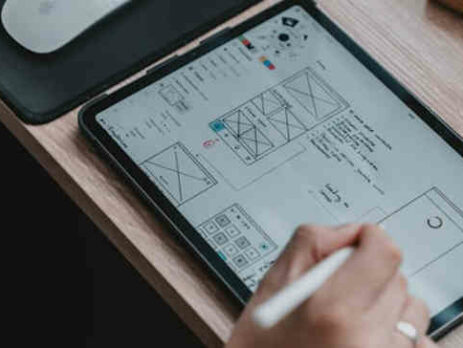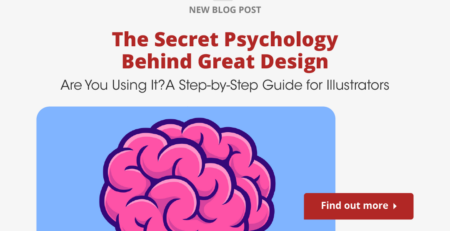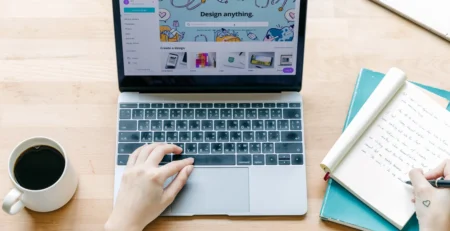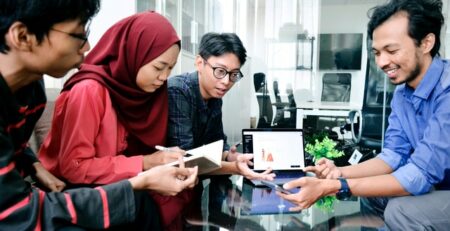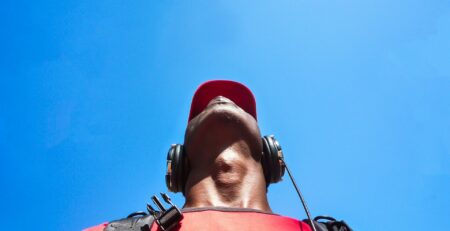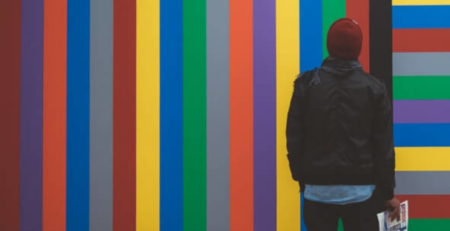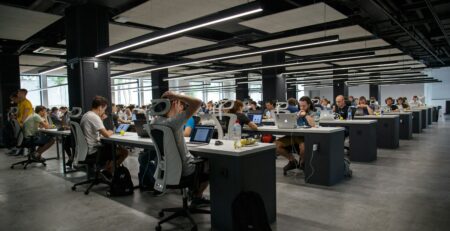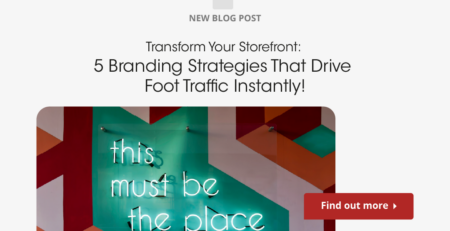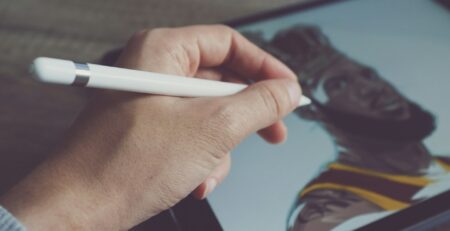8 Things to Look for When Hiring a UX/UI Designer
Navigating the process of finding the high-quality talent needed to construct the face and experience of a product in the ubiquitous digital apps and webpages of modern marketplaces can be tough. Not only can it be difficult to find brilliant architects of user experiences and interfaces, but once you find the talent pool it can also be difficult to sift through and find the designers best suited to the particularities and nuances of your company, it’s philosophy, and its product(s).
Here at icreatives, we’ve been steadily working at building just such a supply of creative designers through local trade organizations across the country. Through countless talent requests and successful placements, be they full-time, part-time, or temporary, we’ve seen every variety of designer profiles and sifted out the lackluster candidates. Hopefully, this guide will help create the basis for a clear understanding of UX and UI designers, what they do, and how to find the perfect one for your needs.
What is UX and UI Design?
Although they are commonly advertised by universities and businesses alike as being one and the same position and they are closely linked, there is a difference between UX and UI design. UI design, or user interface design, deals with all the aesthetics of a product or service. That can be the way a website looks, how the buttons and menus are organized, what kind of graphics are used or any one of a number of other aspects of a site’s appearance.
Beyond websites, every electronic device and some mechanical ones have their own UI design. Microwaves, calculators, and cell phones all do, as do many power tools and industrial machines. Those passionate about aspects of graphic design are more likely to be UI designers since it plays a larger role in interface than it does in UX.
UX design, or user experience, encompasses the entire interaction between active or potential customers and the product. That means the company, the website, the ordering and purchasing process, and the delivery are all implicated in UX. It has a much more technical aspect since it’s essentially the design of the entire process of the purchase.

How do UX and UI Design Interact?
This is a key question, especially for companies that tend to blend the two types of design into one position. UI is included within the scope of what the UX designer has to consider, but that doesn’t mean the UX designer should be handling all the user interface design themselves. That will depend on the size of your project, which is a very important consideration when hiring a new designer. Smaller projects might be able to merge the two design positions into one or rely on a small team of designers who can cover all the aspects of the design.
There are many such considerations to make when you begin the search for the perfect UX/UI designer. The 8 most important are listed below to help you find exactly what you need, drawn from icreatives’ extensive experience in vetting design candidates.
8 Things to Look for in a UX/UI Designer
1- A Sense of Passion for the User
It’s critical to be able to read between the lines of a resume or CV. Sure, they may have years of education at a well-respected university or portfolio school, but if the candidate is relying too heavily on the credentials of their alma mater, you may be looking at somebody who lacks the passion to give your project the heart it needs to really appeal to prospective customers.
That passion can come through in many different ways. Asking about the start of their interest in design or an example of one of their favorite pieces of successful user experience can help illustrate how they view design and their own place as a designer. Savvy recruiters at icreatives have also learned to look out for an inflated sense of self-importance at this stage.
While heartfelt responses about design elements can go a long way in an interview, there are also some designers who seem to think they’ll be saving the world or single-handedly putting your product out there. That unearned arrogance also tends to be indicative of a lack of proper work experience.
2- Work Experience
This doesn’t just mean finding someone directly off a project at a Fortune 500 company. The most important thing to find out about a candidate’s work experience is what they’ve drawn from it. Maybe they started off in a restaurant and worked their way up after finishing school, but that experience should still form some part of their worldview. That’s not to say that hiring someone with no work experience is always the wrong choice, but the candidate should be able to offer some kind of experience with UI or UX design, even if it’s only at a hobbyist level.
Another important thing that you can learn from someone’s work experience is an idea of what they’ve seen before. Fresh ideas are always in high demand from UI/UX designers, but forming those ideas usually requires and wealth of experiences to draw upon. Maybe they didn’t travel the world, but some indication of the candidate’s curiosity and willingness to explore might indicate other traits that will make them a great fit for a project.
3- Convincing Communication
Organizing tasks and planning strategy on a project is important, but a candidate should also be able to clearly explain what they know and why it’s relevant. That means they should easily and readily explain themselves and their ideas and be able to teach new things to others. New ideas only last as long as people have faith in them, so a designer has to convincingly teach their perspective to push forward a design plan effectively.
Your next question should be how you can make sure a candidate has the ability to convincingly communicate. You can’t exactly ask about it outright and expect to get any useful information, but there should be some evidence that the designer has had to explain an idea or face some kind of resistance on a project in the past. If they lack work experience, speak with them about hypothetical situations.
There are surprisingly few people who have had to work in a role that had any kind of adversarial aspect to it. Now, we know it isn’t nice to think of the art department as anything approaching a last-man-standing atmosphere, but even in team environments, ideas have to compete with other ideas if they want to see fruition. The candidate you hire should exhibit a personal flair and they should also have the ability to ensure that that element can come through in the work.
4- An Organized Portfolio
Seeing what a candidate has worked on in the past is really important to see their tastes and styles. But make sure to also take a look within project files to see if there are organized levels and folders. There should also be consistency in naming conventions and evidence that they took care to have a place for everything. Also, look for spacing between elements; there should be some kind of measured pattern in place. Otherwise, you can bet they were trusting their eye to do the work.
The strongest creatives have overarching themes to their work and that should be clear in their portfolio. Of course, they may not jump out since different assignments have different limitations, but the candidate themself should be able to highlight certain parts of their work and link them back to a thematic course in their professional life. If it isn’t exactly a path, that’s fine. It’s much more likely to be a growing process. You can also gauge the success of their communicative ability by asking questions on this subject.
You should also make sure to ask specific questions to find out exactly what the candidate’s involvement was in the projects they mention. See what they’ve learned and whether they had different ideas at the start of the project that changed over time.
5- Knowledge of Professional Tools
There are a great many pieces of software and other things like prototyping tools that candidates should be familiar with so you can be confident that your finished product will be modern in terms of its design. That’s one reason it can be helpful to use a creative staffing agency to find a UX/UI designer when you need one. If you aren’t up to date on what tools designers should know, you can bet the people who make staffing their business know exactly what to look for.
Of course, it’s not just that they know the ins and outs of a program. There are also many ways to be innovative with the tools they use and how they use them. Perhaps they have a favorite shortcut or workaround that enables them to use a certain software well beyond its punching weight. That kind of innovation is not only helpful for the company but can also be a huge relief for the other members of the art department.
They should also have the research skills necessary to stay current on all the needed tech. Most designers have no issue nerding out about the latest patch or software and what it can do, but make sure they aren’t overly fixated.
6- Team-Oriented Design
This ties back in with the inflated ego we mentioned earlier. There’s a romantic idea of artists and designers working solemnly at a desk, suddenly producing heart-wrenching works of genius all on their own through some immense amount of innate talent. But that’s nothing more than simple idealism. The modern workplace requires collaboration within art departments that might span immense physical distances. There’s no space for a heavy center that creates inertia within a department. To stay on top of things and meet deadlines, everyone in the team has to be humble and respectful of the others in the department.
Whatever the best idea is, it should be respected as the best idea no matter who thinks of it. Similarly, all the designers on a project need to be able to scrap ideas that are simply not working so that they can move on to something that does work. If there are people who have their own sense of self-worth wrapped up in whether they’re the star of the show, the whole project can slow down or even capsize.
Designing for a team also means designing for fellow employees who don’t work in the art department at all. Sales staff, IT, and other employees who may not necessarily understand every aspect of the philosophy behind the design of a product can be helped along if that design is user-friendly and its effectiveness is apparent. This idea is closely linked to the seventh point, too.
7- Understanding the Company and the Product
Even if they’re only hired on for one project, designers should understand enough about the goals of the company and the particular objectives of whatever project they are working on. If they truly take pride in what they do, it will come across in their curiosity about the product and what it’s intended to do. This is especially true for UX designers since they have to consider the product on a much wider scale.
For UI designers, understanding the ethos of the company and product is important for coming up with a design that’s not only suitable but enhances the core aspects of the product and where it comes from. A design can be as streamlined and easy to use as possible, but a design plan that is truly intertwined with a company’s ideals jumps out at the user with a kind of heart that template designs can never hope to have.
Curiosity about the product also indicates a care for the eventual user experience, which means candidates with this trait will put more effort into small details and produce a much more effective product overall.
8- Respect for the Digital Experience
Whatever the product is, it’s undeniable that the consumer is most likely to come into first contact with it in a digital space. We spend more and more of our time looking at screens and there is a constant struggle to make that interaction as fulfilling and informative as possible. Any UI or UX designer should convey the impact their work can have on things that might be humdrum for the customer. Using an ATM or purchasing products online are great examples of processes that often seem invisible to the people who do them, but the right design can give them a sense of ease.
It’s also incredibly important that the respect for this experience also translates into respect for the user. If your company has a quality product, there’s no need to dumb it down or hide it behind overly sleek design. The right designer should see the worth in the product and center the design around that. Too much design can hide the product, while successful design should highlight its value.

Hiring a UX or UI Designer with a Creative Staffing Agency
There are many details to consider when searching for the right UI or UX designer candidate, but the 8 listed here are chief among them. The whole process of taking on creative talent can be time-consuming and it certainly requires an intimate knowledge of design and what a solid portfolio looks like. If it’s too much to take on, icreatives have specialized in exactly this kind of work for a long time. Take away the guesswork in the candidates and ensure a ready and able workforce whenever you need it rather than having to scramble for necessary talent every time you need it. Whether it’s part-time, full-time, or temporary, a creative staffing agency is the best way to make sure you get top-notch talent without weeks of exhausting work.
Conclusion:
User experience and user interface design might be viewed as peripheral services for lots of businesses, but hiring on the best talent to build a tailored user experience can completely change the way customers experience your brand. There are many ways to build loyalty but none of them work faster than a pleasant and easy user experience, and designers are the people who craft just that.
When you hire a UI or UX designer, make sure they have knowledge of your company, the product, and the overall idea. They should also communicate clearly and be able to center the success of the product and the user experience over their own personal goals. Look for a team player who knows how to organize information and won’t outshine the product with flashy design tricks. Most importantly, find someone who has a passion for the people who will get the most use out of their work.
Take it from the seasoned recruiters at icreatives: if a designer isn’t working from the smallest detail to the final click with the customer in mind, they aren’t going to create the user experience you need to show your product in the best light and make it easy for customers to access your product or services.

